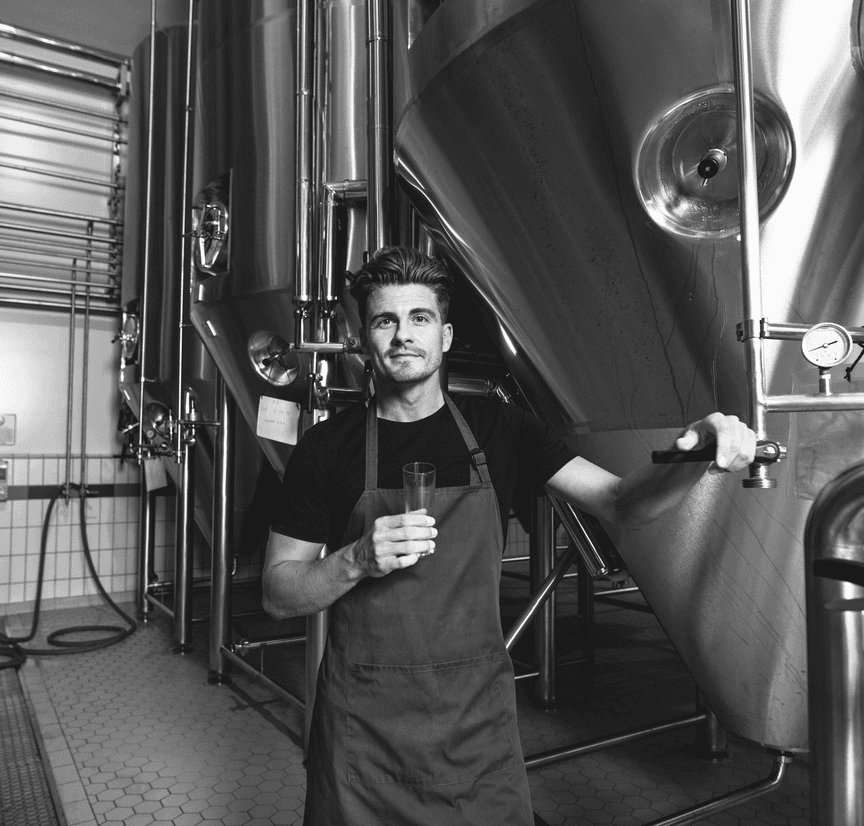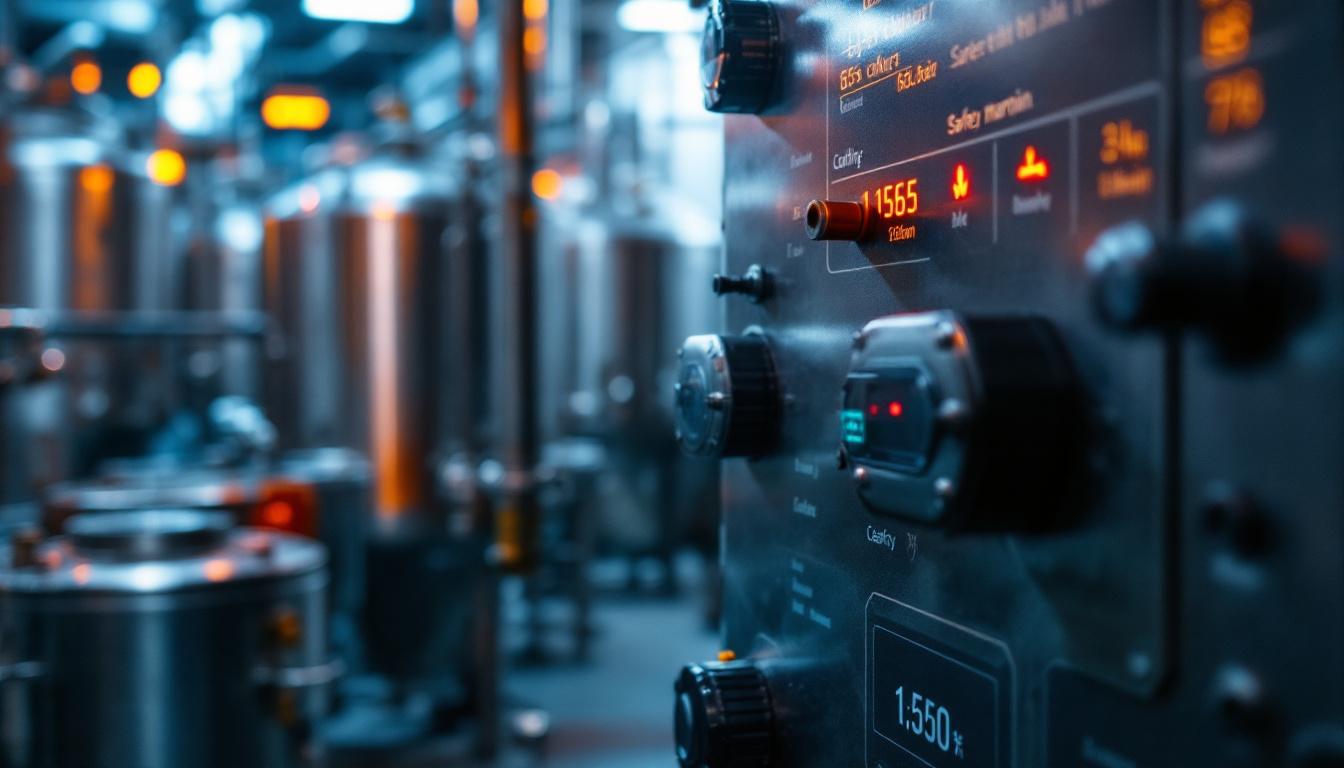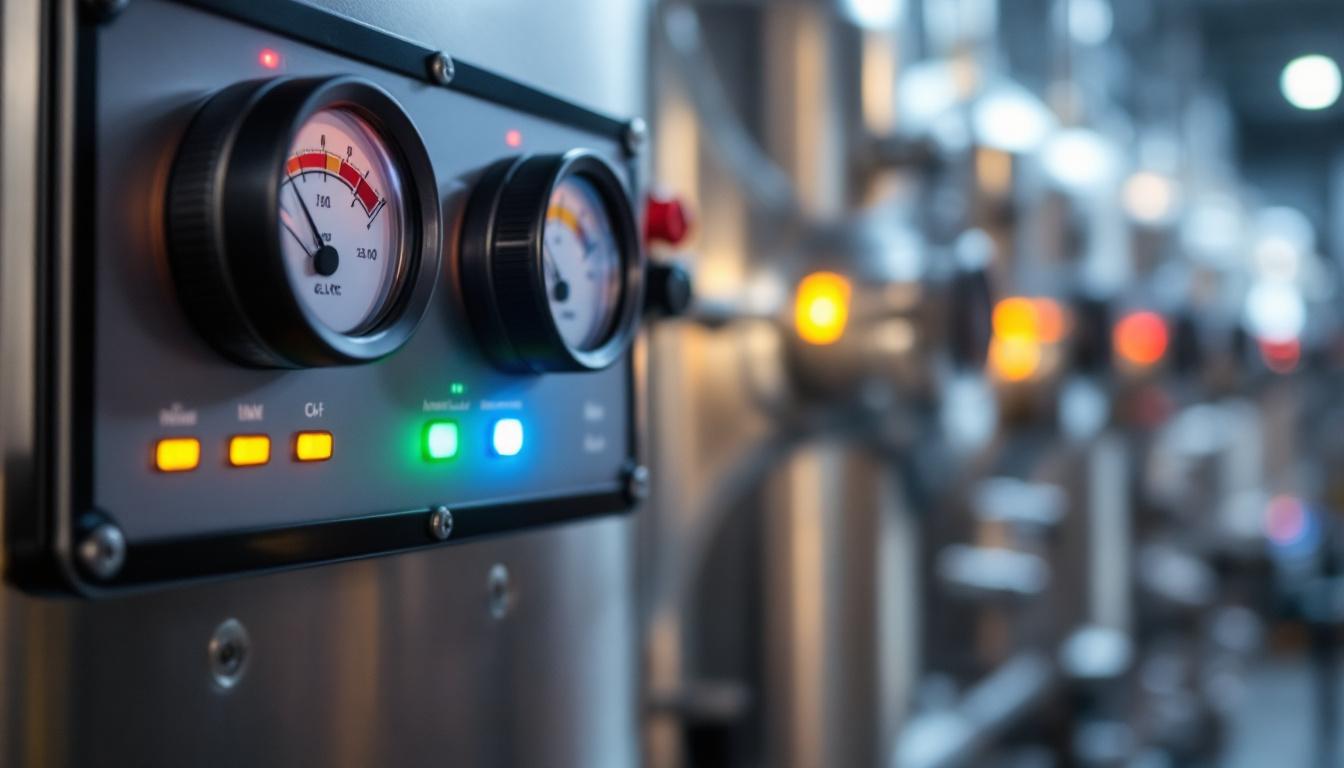Boxing weekend sale! Save up to $700! Shop now Our products ship tariff free

How to Size a Glycol Chiller for Your Fermentation Setup: A Comprehensive Guide
July 28, 2025 9 min read
Efficient temperature control is a cornerstone of successful beer fermentation. Selecting the right glycol chiller not only ensures consistent fermentation temperatures but also optimizes energy use and protects the integrity of your brew. Whether you’re a homebrewer scaling up or a commercial brewery expanding operations, understanding how to size a glycol chiller accurately is essential. This comprehensive guide walks you through the critical steps and considerations to help you choose the perfect glycol chiller for your fermentation setup.
Understanding the Importance of Proper Glycol Chiller Sizing
Glycol chillers play a vital role in maintaining precise fermentation temperatures by circulating chilled glycol through jackets or coils surrounding fermenters. Undersized chillers may struggle to maintain target temperatures, leading to inconsistent fermentation and potential off-flavors. Conversely, oversized chillers can waste energy and increase upfront costs unnecessarily.
Accurate sizing balances cooling capacity with operational efficiency, ensuring your system can handle your fermenters’ thermal loads while providing room for growth and process variability. This guide covers the essential calculations and practical factors to consider, helping you avoid costly mistakes and achieve optimal fermentation performance.
One of the key factors in sizing a glycol chiller is understanding the specific heat capacity of the glycol solution being used. Different concentrations of glycol can affect the thermal conductivity and the freezing point, which in turn influences the overall efficiency of the chilling process. For instance, a higher concentration of propylene glycol may be necessary for operations in colder environments, while a lower concentration might suffice in milder climates. Additionally, knowing the heat load generated by the fermentation process is crucial; this includes not only the metabolic heat produced by yeast activity but also any heat absorbed from the surrounding environment. By accurately assessing these variables, you can ensure that your glycol chiller is properly equipped to handle the demands of your fermentation system.
Moreover, the layout and insulation of your fermentation vessels can significantly impact the performance of your glycol chiller. Poor insulation can lead to heat loss, requiring the chiller to work harder to maintain desired temperatures, which can ultimately shorten its lifespan and increase energy costs. Implementing effective insulation strategies and optimizing the placement of your fermenters can enhance the efficiency of the cooling system. Additionally, regular maintenance and monitoring of the glycol chiller’s performance are essential to ensure it operates at peak efficiency, allowing you to make timely adjustments as needed to accommodate changes in production volume or fermentation conditions.
Step 1: Assess Your Fermentation Cooling Requirements
The first step in sizing a glycol chiller is to thoroughly understand your fermentation process needs. Key parameters include:
- Fermenter Volume: Calculate the total volume of your fermenters, typically measured in gallons or barrels (1 BBL = 31 gallons).
- Desired Temperature Drop (ΔT): Determine the temperature difference you want to achieve — for example, cooling from room temperature (~75°F) down to fermentation temperature (~34°F).
- Cooling Timeframe: Decide how quickly you want to reach the target temperature. Faster cooling requires higher chiller capacity.
These parameters form the foundation for calculating the cooling load your glycol chiller must handle. Understanding these factors is crucial, as they not only influence the efficiency of your fermentation process but also impact the quality of the final product. For instance, a rapid temperature drop can help to minimize the production of unwanted esters and phenols, leading to a cleaner and more desirable flavor profile in your beer or wine.
Moreover, the specific type of fermentation you're conducting—whether it's ales, lagers, or other styles—can dictate different cooling requirements. Ales typically ferment at warmer temperatures, while lagers require a more controlled and cooler environment. Therefore, having a precise understanding of your fermentation goals will enable you to tailor your cooling system effectively, ensuring optimal yeast performance and overall fermentation health.
Example Calculation
Consider a 1 BBL fermenter (31 gallons) that needs to be cooled from 75°F to 34°F (ΔT = 41°F) within 18 hours. Using the formula:
Cooling Load (BTU/hr) = (Fermenter Volume × 8.33 × ΔT) / Cooling Time
Plugging in the numbers:
Cooling Load = (31 × 8.33 × 41) / 18 ≈ 11,763.81 BTU/hr
This calculation estimates the heat energy that must be removed hourly to achieve the desired cooling. It's important to note that this is a simplified model; real-world factors such as ambient temperature fluctuations, insulation quality of the fermenter, and even the metabolic activity of the yeast can all influence the actual cooling load. Therefore, it is wise to consider a buffer in your calculations to accommodate these variables, ensuring that your glycol chiller can handle unexpected heat loads and maintain a consistent fermentation environment.
Step 2: Calculate Additional Cooling Loads
Fermentation cooling isn’t limited to just dropping the temperature of the wort. Several other heat loads affect your chiller’s requirements:
- Active Fermentation Heat Load: Yeast activity generates heat during fermentation, which your chiller must offset. This is often estimated as 280 BTU per 15° Plato per barrel over 70 hours.
- Wort Cooling (Knockdown): Cooling hot wort quickly after boiling adds to the cooling demand.
- Cold Crashing: Rapidly dropping the beer temperature post-fermentation to clarify the beer requires additional cooling capacity.
For example, active fermentation heat load for a 1 BBL fermenter with 15° Plato wort is:
Active Fermentation Heat Load = (280 × 15) / 70 ≈ 600 BTU/hr
Adding this to the primary cooling load ensures your glycol chiller can handle all phases of fermentation.
In addition to these primary considerations, it's important to factor in the ambient temperature of your brewing environment. If your brewery is located in a warmer climate or lacks adequate insulation, the heat load on your chiller will increase significantly. This can lead to inefficiencies and may require a more robust chiller system to maintain optimal fermentation temperatures. Monitoring the ambient conditions regularly can help you adjust your cooling strategy accordingly, ensuring that your fermentation process remains consistent and high-quality.
Moreover, the choice of yeast strain can also influence the heat generated during fermentation. Different yeast strains have varying fermentation profiles, with some producing more heat than others. Understanding the characteristics of the yeast you are using, including its temperature tolerance and heat generation, can aid in more accurately calculating your cooling load. This knowledge allows brewers to tailor their cooling strategies to the specific needs of each batch, optimizing both the fermentation process and the final flavor profile of the beer.
Step 3: Determine Total Cooling Capacity with Safety Margin
Sum all calculated cooling loads to find the total cooling capacity your glycol chiller must provide. It’s prudent to add a safety margin of 10-15% to accommodate unforeseen heat gains, environmental variations, or future process changes.

For instance, if your combined cooling load is 12,000 BTU/hr, adding a 15% margin results in a target chiller capacity of approximately 13,800 BTU/hr.
This buffer helps maintain stable fermentation temperatures even under fluctuating conditions.
In addition to the primary cooling loads, consider any ancillary equipment that may generate additional heat. For example, pumps, compressors, and even lighting can contribute to the overall thermal load in your facility. By accounting for these factors, you ensure that your chiller operates efficiently and effectively, preventing any potential disruptions in your processes.
Furthermore, it's essential to regularly review and adjust your cooling capacity as your operations evolve. As production scales or new equipment is introduced, the cooling requirements may change significantly. Keeping a close eye on these variables allows for timely upgrades or adjustments to your glycol chiller system, ensuring optimal performance and energy efficiency throughout its lifespan.
Step 4: Selecting the Right Glycol Chiller
Once you know your total cooling capacity, it’s time to choose a glycol chiller that meets or exceeds this requirement. Key factors to consider include:
- Cooling Capacity: Expressed in BTU/hr or tons of refrigeration. Ensure the chiller’s rated capacity matches your calculated needs.
- Reservoir Size: Larger glycol reservoirs provide better temperature stability and buffer against fluctuations.
- Electrical Requirements: Verify compatibility with your facility’s power supply (voltage, phase, amperage).
- Physical Dimensions: Confirm the chiller fits within your available space.
Example of a Glycol Chiller Specification
The BEF-02 glycol power pack is a compact system with a cooling capacity of 2,750 BTU/hr, suitable for small-scale setups or supplemental cooling. It features a 4.5-gallon water bath reservoir and a 1/3 HP compressor, designed for installations with up to 75 feet of insulated draught beer trunk line. Its compact footprint (16.5" x 20" x 20") and ease of installation make it ideal for tight spaces.
For larger operations, a 1 HP glycol chiller with a 3-gallon reservoir can offer around 5,000 BTU/hr at 28°F, capable of handling multiple 1 BBL fermenters simultaneously.
Choosing a chiller with slightly higher capacity than your immediate needs can provide operational flexibility and accommodate future expansion. Additionally, consider the efficiency ratings of the chiller; units with higher energy efficiency can lead to significant cost savings over time, especially in environments where the chiller will be running continuously. Look for models with variable speed compressors, as these can adjust their output based on the cooling demand, further enhancing energy savings and reducing wear on the system.
Another important aspect to consider is the maintenance requirements of the glycol chiller. Some systems are designed for easy access to components, allowing for straightforward routine maintenance, while others may require more extensive disassembly. Regular maintenance is crucial to ensure optimal performance and longevity of the chiller. It’s advisable to consult the manufacturer's guidelines and potentially schedule annual professional servicing to keep the system running smoothly and efficiently.
Step 5: Plan for Future Expansion
Breweries often grow over time, adding fermenters or increasing batch sizes. Selecting a modular glycol chiller system allows you to scale your cooling capacity incrementally by adding chiller modules as needed. This approach avoids overspending upfront while preparing your brewery for growth.
Modular systems also facilitate maintenance and reduce downtime, as individual modules can be serviced without shutting down the entire cooling system.
Step 6: Utilize Online Tools and Consult Experts
Several online calculators and resources can simplify the sizing process by automating complex calculations based on your inputs:
- Thermal Care’s Brewery Chiller Sizing Calculator offers customized chiller recommendations tailored to your brewery’s specifications.
- Hashtek’s Glycol Chiller Calculator helps estimate cooling times and chiller sizes for ice water extraction and fermentation cooling.
After performing your calculations, it’s wise to consult with glycol chiller manufacturers or industry professionals. They can validate your sizing, suggest suitable models, and provide insights based on real-world experience.
Additional Considerations for Optimal Fermentation Cooling
Safety and Operational Best Practices
Maintaining safety and system longevity requires attention to operational details. Always use a Ground Fault Circuit Interrupter (GFCI) protected outlet for electrical safety. Avoid running pumps dry and ensure proper priming to prevent damage. Pressure in cooling jackets should not exceed manufacturer recommendations (typically 5 psi) to avoid equipment failure.

Proper cleaning and maintenance of your glycol chiller and fermenters extend equipment life and maintain brewing quality. Use non-abrasive cleaners and regularly inspect pressure relief valves to prevent overpressure damage.
Integration with Fermentation Equipment
Ensure your glycol chiller is compatible with your fermenters’ cooling jackets or coils. The circulation pump flow rate and head pressure must be adequate to maintain glycol flow through your system. For example, the BEF-02 chiller includes an integrated circulation pump with a flow rate of 175 GPH, suitable for certain small-scale applications.
Consider the length and insulation quality of glycol lines, as longer runs or poor insulation increase heat gain and reduce cooling efficiency.
Energy Efficiency and Environmental Impact
Modern glycol chillers employ environmentally friendly refrigerants such as R513a, which have lower global warming potential. Selecting energy-efficient models not only reduces operating costs but also aligns with sustainable brewing practices.
Regular maintenance, including refrigerant checks and cleaning heat exchangers, optimizes chiller efficiency.
Summary: Key Takeaways for Sizing Your Glycol Chiller
- Accurately calculate your cooling load based on fermenter volume, desired temperature drop, and cooling timeframe.
- Include additional heat loads such as active fermentation heat, wort cooling, and cold crashing.
- Add a safety margin of 10-15% to your total cooling capacity for reliable operation.
- Select a glycol chiller that meets or exceeds your calculated cooling needs, considering reservoir size, power requirements, and physical space.
- Plan for future growth by choosing modular or scalable chiller systems.
- Use online calculators and consult experts to validate your sizing and equipment selection.
- Follow safety protocols and maintain your system to ensure longevity and consistent brewing quality.
By following these guidelines, brewers can confidently select a glycol chiller that supports precise fermentation temperature control, improves beer quality, and enhances operational efficiency. For more detailed calculations and chiller options, explore resources such as Drake Chillers’ brewery chiller sizing guide.
Ready to Elevate Your Brewing Experience?
At Bräu Supply, we design premium all-in-one brewing systems, fermenters, and accessories engineered for serious home and professional brewers. Whether you're refining your process or scaling up, our innovative gear helps you brew better, faster, and with more control. Explore our full product line of glycol chillers and discover why brewers around the world trust Bräu Supply.
Subscribe
Sign up to get the latest on sales, new releases and more …

